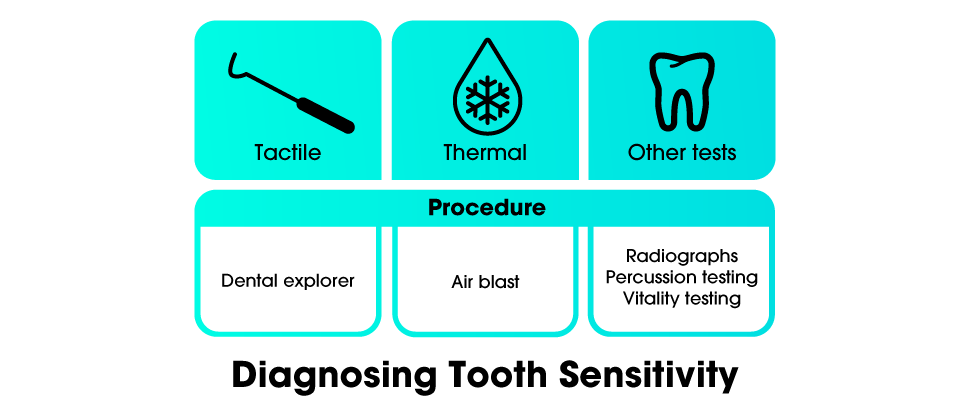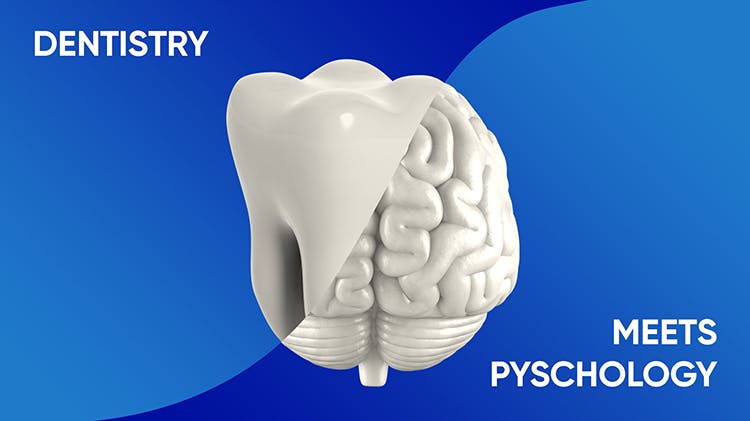Diagnosing Tooth Sensitivity

Diagnosing dentine hypersensitivity
“A short sharp pain arising from exposed dentine in response to stimuli, which cannot be ascribed to any other form of dental defect or pathology.”1
Patient history
The Canadian Advisory Board guidelines recommend screening all patients for dentine hypersensitivity to diagnose and help patients manage the condition effectively.2
Patient-reported history should be obtained (in addition to objective measures) to support a diagnosis.2,3
Certain individuals may be more susceptible to dentine hypersensitivity than the general population, for example:2,3
- People who brush their teeth aggressively
- People who have had periodontal treatment
- Frequent consumers of high-acid food/beverages
- People with bulimia
Questions to ask patients as part of a patient history that may indicate dentine hypersensitivity2
| Probing questions | What might indicate dentine hypersensitivity? |
| Can you describe the pain you experience?Is it dull, throbbing? | Pain described as:Short, sharp |
| What causes this pain?Is it a particular food or drink that triggers it? | Pain triggers:Thermal, osmotic and/or tactile |
| Can you describe your brushing habits to me? | Excessive brushing, poor oral hygiene |
| Can you describe your diet to me? | Excessive dietary acids: Wine, citrus fruits, fruit juices, pickles, etc. |
| Do you suffer from acid reflux or experience excessive vomiting? | Look for signs of: Gastric reflux or excessive vomiting |
Differential diagnosis of dentine hypersensitivity
There are a number of conditions with symptoms similar to dentine hypersensitivity. These conditions should be excluded before confirming a dentine hypersensitivity diagnosis.3
| Aetiology | Pain type | Pain-evoking stimulus | Associated features |
| Cracked tooth syndrome | Sharp, intermittent, short duration,resolves on removal of stimulus |
|
|
| Pulpitis | Sharp or dull, difficult to determine precise location in the mouth, spontaneous (may not need stimulus), possibly throbbing, longer duration, likely to keep patient awake at night |
|
|
| Periapical periodontitis | Dull, spontaneous (may not need stimulus),possibly throbbing, longer duration,likely to keep patient awake at night |
|
|

Useful diagnostic tests
Dentine hypersensitivity diagnosis can be confirmed by using a dental explorer to check response to tactile stimulus or air blast to check response to cold stimulus.4,5
Assessing the pain of dentine hypersensitivity
Tests to confirm dentine hypersensitivity are aimed at evoking pain with a defined stimulus. In clinical trials, the intensity of the pain or level of discomfort caused can be quantified by the clinician or the patient.4 The Schiff scale allows the clinician to rate the degree of pain the patient is experiencing in reaction to cold air.4 The visual analogue scale (VAS) allows the patient to mark the degree of pain on a gradient scale.4
Help your patients enjoy life without sensitivity

Causes and mechanisms
Find out about the causes and mechanisms behind dentine hypersensitivity.
Impact on patient quality of life
Find out about the impact dentine hypersensitivity has on patients’ daily lives.



